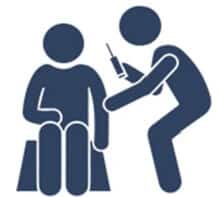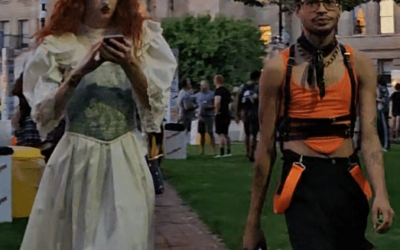The following is a list of different types of vaccines, their method of attacking a pathogen, risks, and which pathogens they are used against. The information is from various sources, listed at the end of the article.
“All vaccines work by exposing the body to molecules from the target pathogen to trigger an immune response – but the method of exposure varies.”5

Of course, there are risks to all vaccines, immunizations, and inoculations. By the way, “…vaccines are made up of a partial, weakened, or dead version of a scientist-made germ, bacterium or virus.”12 An “Immunization is the process wherein a person is made immune or resistant to an infectious disease, typically by the administration of a vaccine.”11 An inoculation “describes the introduction of a substance into the body to confer protection.”11
Please read the CARM disclaimer about this information.
- Conjugate Vaccines
- See “subunit vaccines” below
- DNA Vaccines
- Method
- “DNA vaccines, which are often referred to as the third-generation vaccines, use engineered DNA to induce an immunologic response in the host against bacteria, parasites, viruses, and potentially cancer…any DNA vaccine involves the use of a DNA plasmid that encodes for a protein that originated from the pathogen in which the vaccine will be targeted.”6
- “It involves the injection of naked DNA that encodes antigens under the control of a eukaryotic promoter, and results in strong and sustained humoral and cell-mediated responses.”7
- Risks
- Used against
- Possible HIV usage6 though none are cleared for use.
- Method
- Inactivated vaccines (Whole Virus Vaccine)
- Method
- “Inactivated vaccines use the killed version of the germ that causes a disease.”1
- “Inactivated vaccines use viruses whose genetic material has been destroyed so they cannot replicate, but can still trigger an immune response.”3
- “Inactivated vaccines contain viruses whose genetic material has been destroyed by heat, chemicals or radiation so they cannot infect cells and replicate, but can still trigger an immune response.”5
- Risks
- “Minor adverse reactions such as local Local (or localized )Restricted or limited to a specific body part or region. redness and swelling, fever and agitation are very common with wP vaccines (10 – 50%).”10
- Used against
- Hepatitis A, Flu (shot only), Polio, Rabies1
- Method
- Live-attenuated vaccines (Whole Virus Vaccine)
- MRNA, Messenger RNA vaccines
- Recombinant Vector vaccines
- Method
- “Recombinant vaccines are made using bacterial or yeast cells to manufacture the vaccine. A small piece of DNA is taken from the virus or bacterium against which we want to protect and inserted into the manufacturing [bacterial or yeast] cells.”9
- “act like a natural infection, so they’re especially good at teaching the immune system how to fight germs.”1
- “Replicating recombinant vector vaccines consist of a fully competent viral vector backbone engineered to express an antigen from a foreign transgene.”8
- Used against
- Hepatitis B9
- Method
- Subunit, recombinant, polysaccharide, and conjugate vaccines
- Method
- Risks
- Used against
- Hib, Hepatitis B, Human papillomavirus, Whooping cough, Pneumococcal disease, Meningococcal disease, shingles1
- Toxoid vaccines
- Method
- “Toxoid vaccines use a toxin (harmful product) made by the germ that causes a disease. They create immunity to the parts of the germ that cause a disease instead of the germ itself. That means the immune response is targeted to the toxin instead of the whole germ.”1
- “Some bacteria release toxins (poisonous proteins) when they attack the body, and it is the toxins rather than the bacteria itself that we want to be protected against. The immune system recognizes these toxins in the same way that it recognizes other antigens on the surface of the bacteria, and is able to mount an immune response to them. Some vaccines are made with inactivated versions of these toxins. They are called ‘toxoids’ because they look like toxins but are not poisonous.”9
- Risks
- “Anaphylaxis, An acute, multi-system, allergic reaction (IgE mediated) to a substance, such as vaccination, drugs, and food. Symptoms of anaphylaxis may include breathing difficulties, loss of consciousness, and a drop in blood pressure. This condition can be fatal and requires immediate medical attention. (1.6 per million doses) and brachial neuritis Brachial neuritis (also known as brachial plexus neuropathy or neuralgic amyotrophy) A neuropathy that presents as a deep, steady, often severe aching pain in the shoulder and upper arm and may include muscular weakness. (0.69 cases per 10 million) are extremely rare.”10
- Used against
- Method
- Viral vector vaccines
- Method
- “Viral vector vaccines use a modified version of a different virus as a vector to deliver protection.”1
- “…they use a harmless virus, different from the one the vaccine is targeting, to deliver these instructions into the cell.”3
- “using harmless viruses to deliver the genetic code of target vaccine antigens to cells of the body, so that they can produce protein antigens to stimulate an immune response.”9
- Used against
- Covid 191
- Method
- Whole Virus
- There are two types of Whole Virus Vaccines: Live attenuated and inactivated, listed above.
Sources:
1. https://www.hhs.gov/immunization/basics/types/index.html
2. https://www.cdc.gov/coronavirus/2019-ncov/vaccines/different-vaccines/mrna.html
3. https://www.gavi.org/vaccineswork/there-are-four-types-covid-19-vaccines-heres-how-they-work
4. https://www.gavi.org/vaccineswork/what-are-protein-subunit-vaccines-and-how-could-they-be-used-against-covid-19
5. https://www.gavi.org/vaccineswork/what-are-whole-virus-vaccines-and-how-could-they-be-used-against-covid-19
6. https://www.news-medical.net/health/What-is-a-DNA-based-vaccine.aspx
7. https://www.nature.com/articles/nm0299_126a
8. https://www.ncbi.nlm.nih.gov/pmc/articles/PMC6668849/
9. https://vk.ovg.ox.ac.uk/vk/types-of-vaccine
10. https://vaccine-safety-training.org/toxoid-vaccines.html
11. https://www.verywellhealth.com/the-difference-between-immunization-and-vaccination-4140251#citation-4)
12. https://www.covidvaccinefacts.org/questions/what-vaccine






